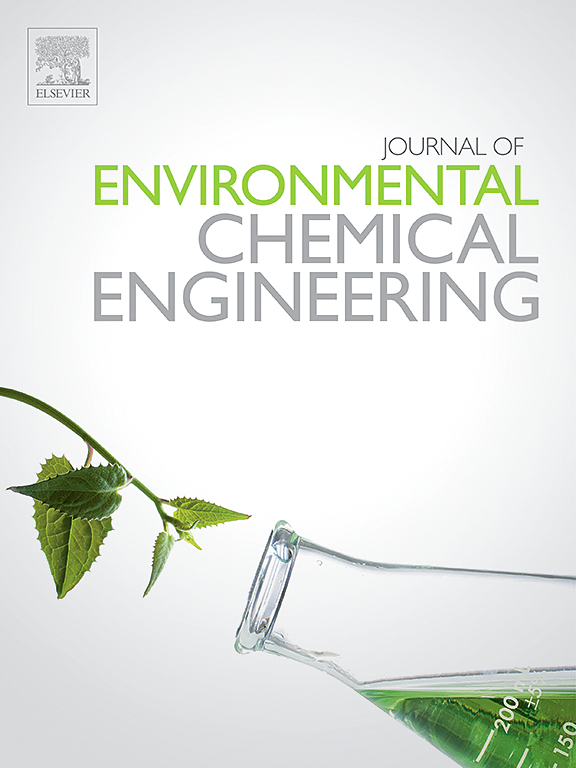用于生物制氢的微藻-细菌联合体-潜在的微生物催化剂?机理、影响因素及工艺优化综述
IF 7.4
2区 工程技术
Q1 ENGINEERING, CHEMICAL
引用次数: 0
摘要
全球能源需求不断增加,而大部分能源供应主要依赖于化石燃料,这是造成全球变暖的重要因素。这需要寻找替代能源来克服化石燃料的不利影响。氢是一种突出的燃料,因为它的能量密度比其他化石燃料高,而且零碳排放。第三代生物燃料微藻(Biohydrogen)制氢被认为是一种环保且具有成本效益的方法,因为它不需要更多的能源,也不产生任何有毒的中间体。此外,微藻只需要氮、磷等必需的营养物质和阳光来产生生物氢。来自家庭和选定工业的废水是一种极好的生物制氢介质,微藻处理废水的潜力是微藻基生物制氢的另一个好处。然而,阻碍微藻广泛生长的主要障碍是生物质的高收获成本、低生物质产量、低处理效率和低产氢率。本文主要综述了微藻-细菌联合体在生物制氢中提高产量的潜力。介绍了生物制氢的各种微藻和细菌及其特性、合成方法和产氢机理。此外,还讨论了利用废水作为底物的可能性、微藻-细菌联合方法的各种影响因素和局限性,以及提高生物制氢潜力的未来方向。本文章由计算机程序翻译,如有差异,请以英文原文为准。
Microalgae-bacteria consortium for biohydrogen production ‐ A potential microbial catalyst? A review on mechanism, influencing factors and process optimization
The global energy demand is increasing, and most of the energy supply mainly depends on fossil fuels, significantly contributing to global warming. It necessitates finding alternate energy sources to overcome the adverse impacts of fossil fuels. Hydrogen is a prominent fuel due to its higher energy density than other fossil fuels and zero carbon emissions. Hydrogen production from third-generation biofuel microalgae (Biohydrogen) is considered an environmentally friendly and cost-effective method because it does not require more energy and does not produce any toxic intermediates. Moreover, microalgae require only essential nutrients like nitrogen and phosphorous and sunlight to produce biohydrogen. The wastewater from domestic and selected industries is an excellent medium for biohydrogen production, and the potential of microalgae to treat wastewater is an additional benefit to microalgae-based biohydrogen production. However, the main obstacles hindering the widespread growth of microalgae are the high harvesting cost of biomass, low biomass production, treatment efficiency, and low hydrogen yield. This review mainly focuses on the potential of the microalgae-bacterium consortium in biohydrogen production to enhance the yield. The various microalgae species and bacteria for biohydrogen production and their characteristics, synthesis, and mechanism of biohydrogen production are presented. In addition, the possibility of utilizing wastewater as a substrate, various influencing factors and limitations in the approach of microalgae-bacteria consortium, and the future directions in improving the biohydrogen production potential are discussed.
求助全文
通过发布文献求助,成功后即可免费获取论文全文。
去求助
来源期刊

Journal of Environmental Chemical Engineering
Environmental Science-Pollution
CiteScore
11.40
自引率
6.50%
发文量
2017
审稿时长
27 days
期刊介绍:
The Journal of Environmental Chemical Engineering (JECE) serves as a platform for the dissemination of original and innovative research focusing on the advancement of environmentally-friendly, sustainable technologies. JECE emphasizes the transition towards a carbon-neutral circular economy and a self-sufficient bio-based economy. Topics covered include soil, water, wastewater, and air decontamination; pollution monitoring, prevention, and control; advanced analytics, sensors, impact and risk assessment methodologies in environmental chemical engineering; resource recovery (water, nutrients, materials, energy); industrial ecology; valorization of waste streams; waste management (including e-waste); climate-water-energy-food nexus; novel materials for environmental, chemical, and energy applications; sustainability and environmental safety; water digitalization, water data science, and machine learning; process integration and intensification; recent developments in green chemistry for synthesis, catalysis, and energy; and original research on contaminants of emerging concern, persistent chemicals, and priority substances, including microplastics, nanoplastics, nanomaterials, micropollutants, antimicrobial resistance genes, and emerging pathogens (viruses, bacteria, parasites) of environmental significance.
 求助内容:
求助内容: 应助结果提醒方式:
应助结果提醒方式:


